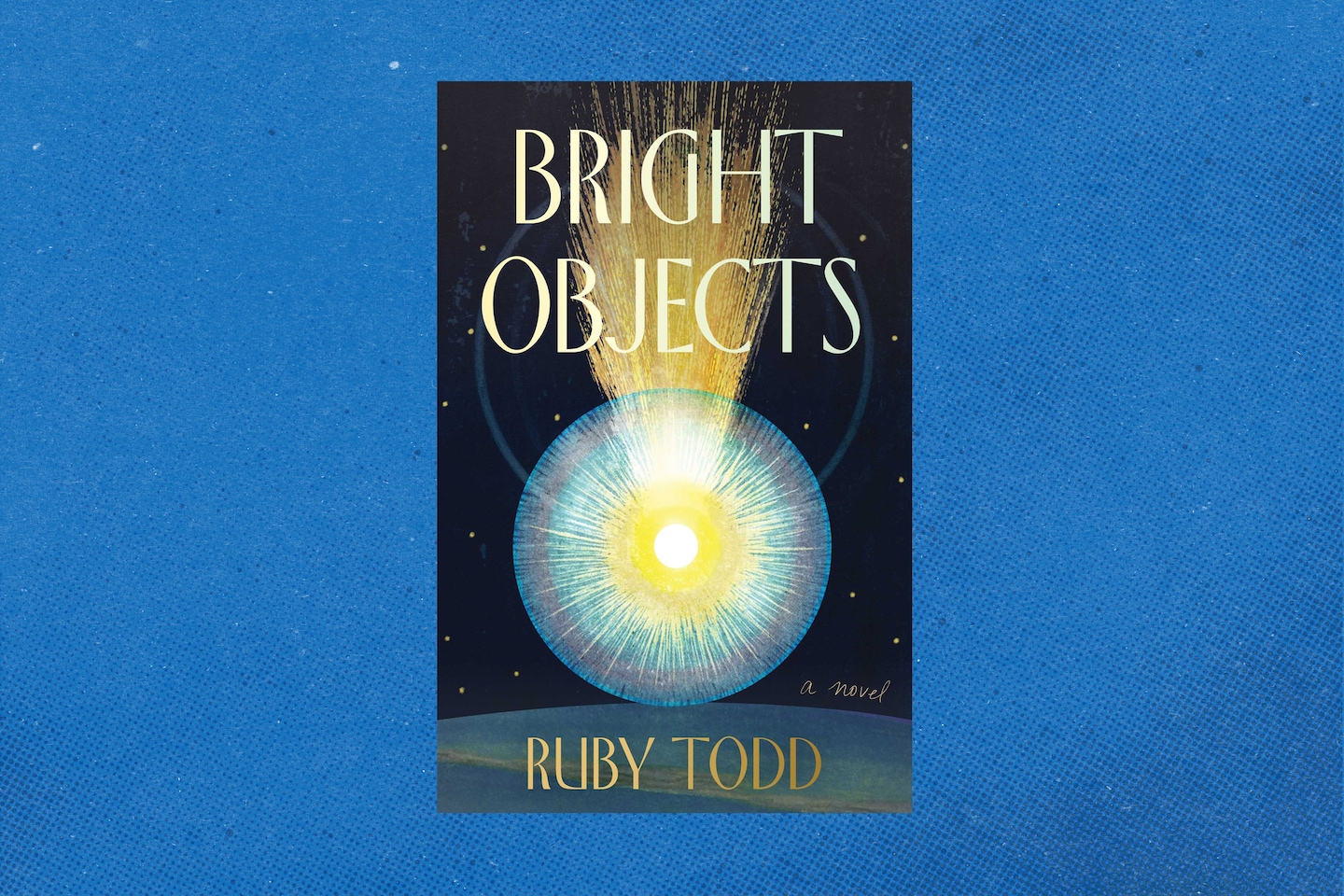Comet St. John’s arrival, also set in 1997, is compared to “the circus surrounding royal births — the professional watchers, the spokespeople, the public, and the press, all wanting to fill the void before the new creature’s first appearance.” Locals eye the rural skies with a great anticipatory energy. In an echo of Hale-Bopp, eccentrics believe there’s a UFO tailing the comet. This brings the community to a frenzy, threatening the already precarious existence of a 31-year-old widow named Sylvia Knight.
Sylvia, who narrates the novel, is a deeply depressed funeral home director whose husband died two years earlier in a hit-and-run car crash. Sylvia had been driving when they were struck. Now she’s physically recovered but haunted by survivor’s guilt, surrounded by the dead at the office as well as in her thoughts. She plans to take her own life on the night that Comet St. John first appears to the naked eye, a date that will coincide with the two-year anniversary of her husband’s death.
“Bright Objects” begins with an engaging premise: “When I died for the second time,” Sylvia tells us in a prologue, “in August 1997, inside the floral bedroom of a country house as Chopin’s ‘Nocturnes’ played …” But the first act gets bogged down in the details of Sylvia’s mood. Though Todd writes well about dejection, she relies heavily on internal monologue to portray it, and the book’s pace suffers early on from a lack of action. “I didn’t want to watch myself age without Christopher,” Sylvia thinks, “didn’t want to watch time express itself in my features, like some tragic Nosferatu, alone and tired of life but condemned to survive.”
Sylvia is pulled from her downward spiral by, of all people, the comet’s original discoverer, Theo St. John, an Arizonan probing the skies from a nearby observatory. A standoffish sulker himself, Theo is handsome and pensive, and his amorous inroads prompt the gradual collapse of Sylvia’s plan. Given her mind-set, there’s nothing easy about romance (“I’m thinking that I’d like to have met you at a different time,” Theo says). But, like a cosmic pheromone, here comes that comet. For Sylvia and Theo, the time is now.
As “Bright Objects” expands in scope, Sylvia plots against a local policeman who she believes is responsible for the hit-and-run. And through her work at the funeral home, she enters the orbit of Joseph, a woo-woo sweet talker who has credulous neighbors hanging on his every word. He says things like, “Beings seem to exist only in the interval between physical birth and death. But this is an illusion of the external senses, which can’t discern the spirit hidden in all things.” Sylvia soon discerns a certain glossy-eyed vibe emanating from his followers.
Given Theo’s proclivity for science and reason, she enlists his help in extracting one of those followers, her mother-in-law, from Joseph’s group before something goes terribly wrong, most likely at the St. John Comet Near-Earth Festival.
“Eventually it felt like the whole world was waiting for St. John to near the sun,” Todd writes, “in the same way a crowd waits for a woman to be lifted in a ballroom dance, so they can applaud and exhale.”
The comet grows clearer by the day before finally reaching peak visibility. Todd tracks its progress across the constellations and steers her twisty narrative with artful control. “I had my hopes for what its brightest point might bring,” Sylvia thinks of St. John, “but I never guessed it would become a key, revealing the truth to me at last, reversing my blindness, my instinct for grievance and self-punishment and in the heat of rebirth, pointing the way to an unlikely freedom.”
Whatever readers might already know about the Heaven’s Gate tragedy, “Bright Objects” builds to a satisfying (and satisfyingly unexpected) finale. A little bit thriller, a little bit mystery, the novel’s genre elements are commendably propulsive. Some of its issues — uneven pacing, inconsistent characterization — are encountered frequently in debut novels and don’t obscure the fact that Todd’s confidence and talents augur a bright future.
If you or someone you know needs help, visit 988lifeline.org or call or text the Suicide & Crisis Lifeline at 988.
Eric Olson is a writer and critic based in Seattle.
Simon & Schuster. 334 pp. $28.99
#Bright #Objects #Ruby #Todd #Comet #blazes #promising #debut,
#Bright #Objects #Ruby #Todd #Comet #blazes #promising #debut
